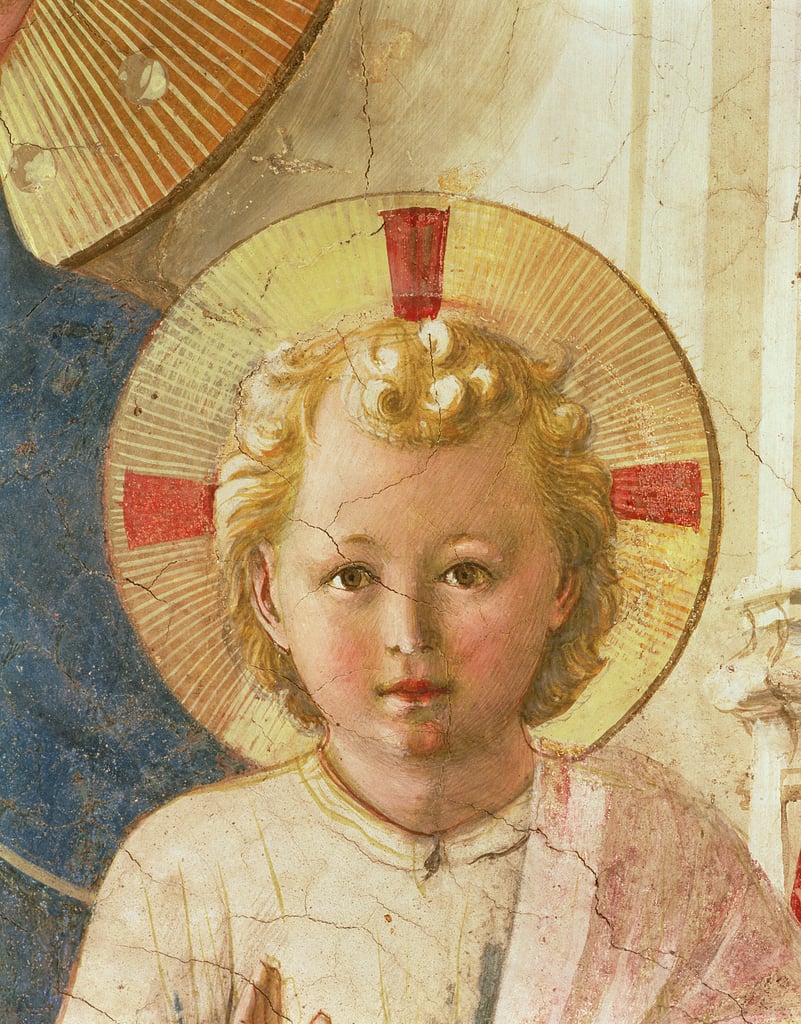The Incarnation is a great example of that scholastic maxim, Whatever is received is received according to the mode of the receiver. (Quidquid recipitur ad modum recipientis recipitur.) By becoming incarnate of the Virgin Mary, the Son of God proportions himself to our “mode” so that we can receive him. In his mercy, he doesn’t demand that we become capable of him but makes himself capable of being received by us. True mercy always has this quality of being fitted, tailor-made for those in need, neither too high for them to reach nor too hard for them to accept.
So God comes to us in a manner we can receive. The infinite becomes finite, the eternal enters time, and the Creator of all is born of the Virgin and laid in the manger. We can receive him because he has become accessible to all of us, and to every kind of us, from the lowly shepherds to the learned Magi. We can receive mercy more easily because – without losing any of its power – it has been scaled to our size.
And not only to our size. God’s mercy is also fitted to our wounded human nature. He is born poor to meet us – we who have squandered our gifts and lost our inheritance. He is born homeless for us, who live in this world as exiles. He is born exposed to the elements and even to his enemies to encounter us, who are so weak and in danger. He is born alienated from his own people – who “received him not,” (Jn 1:11) – to be one with us, who are alienated from God and from one another.
He unites himself to us in these sorrows because mercy does not stand far off and look patronizingly on the suffering. The Lord of mercy draws near, unites himself with us, and becomes one with us in our misery. The poverty of his birth already points to Jesus as the man of sorrows, the one united with humanity’s every kind of suffering – mental, emotional, physical, spiritual.
But the simplicity and ease with which we can now approach God doesn’t mean that his mercy is indulgent and permissive. On the contrary, like all newborn children, he calls out and asks something from us. The infant Christ cries out to us, asking that we receive him and respond. Yet even this inconvenience is proportioned to our needs, for it keeps us from the vice of taking his mercy for granted. (Read more.)
From Aleteia:
Many of us forget, however, that Christmas is actually the origin of the thing we call “childhood!” That’s because Christianity essentially invented this cherished human phase. Before the news that God was born in infant flesh, “childhood” could not make its mark on the human imagination. We can thank Jesus, therefore, for the modern concept of “the child.”
In the ancient world, children were often regarded as burdens to society, expendable, fleeting, and unworthy of too much sacrifice or care. Rates of infant mortality were high, and even the children of nobility were raised by slaves or servants. Children were vessels of potential, yes—but a potential whose realization was uncertain. Perhaps the ancient heart resisted investing too much in something so fragile. Perhaps a hardscrabble world could not look with too much indulgence on “idle mouths to feed.”
In ancient art, then, we seldom see children that look like children. They are diminutive adults, pasted over with symbols of their future usefulness, pointing to a time when they’ll “pull their weight.” Girl children in ancient Egypt were shown with bodies fully-developed and often eroticized. Boys had adult proportions and wore cumbersome insignia or uniforms. Even in Augustan Rome, whose government policies rewarded childbearing, the royal princes were depicted in heavy togas, gazing with eyes haunted by weighty responsibility.
With Christianity, however, came a new appreciation for childhood. The One, transcendent God had become a baby! Divinity had inhabited the infant form, revealing its grace and beauty—a beauty that lay precisely in “uselessness” and vulnerability! Famously, the first image of the Christ Child appears in the catacombs of Priscilla in northern Rome. Here, a gentle, veiled lady holds a chubby toddler on her lap. Thenceforth, Christian artists would show greater and greater insight into the condition of childhood and all its precious stages—each a poignant revelation of a vulnerable and self-giving God. (Read more.)



















No comments:
Post a Comment